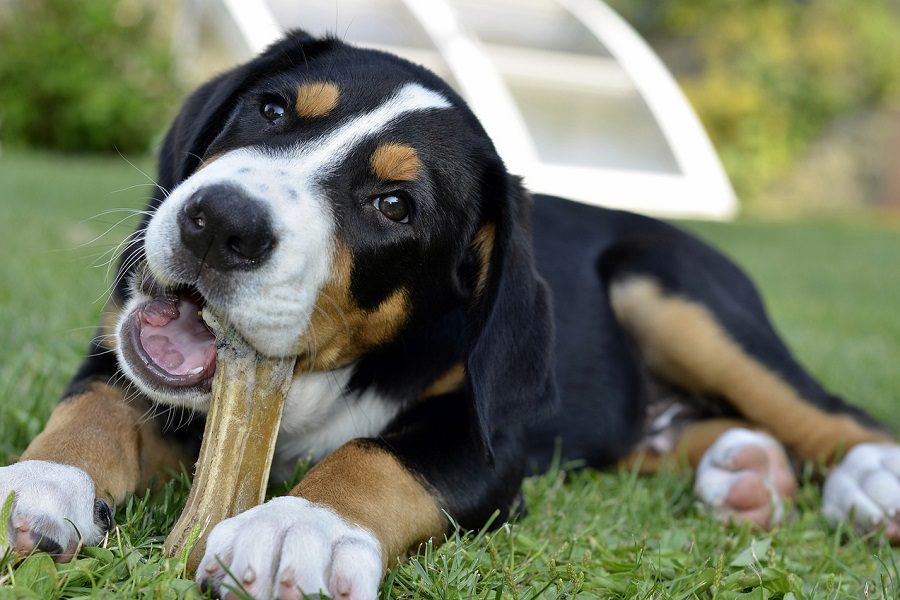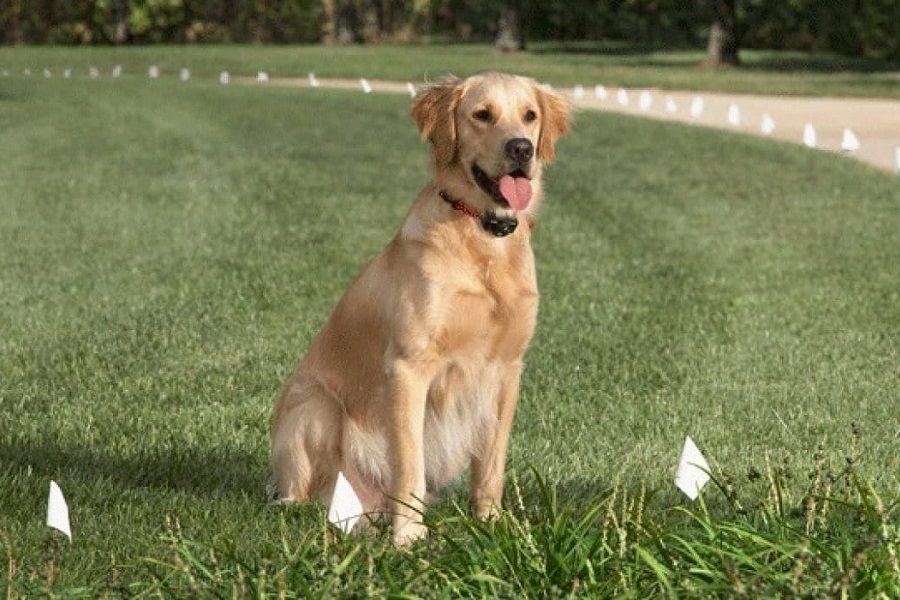Last Updated: 2 years ago
So you’re thinking of getting a Labradoodle but not sure how to groom Labradoodles? Do you even groom them since they are non-shedding? Are Goldendoodles high-maintenance overall in terms of grooming?
Well, you’re in the right place my friend! Here we shall look at all of these questions in detail.
So to start off, what is a goldendoodle? And what is labradoodle grooming?
A Goldendoodle or a Labradoodle is a hybrid between a Labrador Retriever and a Poodle. So we as owners can have the best of both worlds, you see?
Oftentimes people choose labradoodles because they are hypoallergenic and non-shedding. But there’s a catch!
Not all labradoodles are actually non-shedding! Yes, you heard that right – there is a wide variety of Goldendoodle hybrids out there with vastly different coats.
- Poodle coats are curly and thick, but poodles don’t have an insulating undercoat. Poodle dogs do shed, but the dense coat doesn’t let the hair fall down. Hence the hypoallergenic dog rep the poodles get.
- The Labrador Retriever coat, on the other hand, is coarse, straight, and medium length. Labrador Retrievers have an insulating under layer, and they shed year-round. Twice a year, they do shed a lot; hence, they are not ideal for people with allergies.
- Labradoodle coat is closer to the Poodle one, it’s a single layer, thick and curly one, mostly non-shedding. However, as a hybrid, your puppy can also inherit more from the Labrador Retriever parent and hello year-round shedding!
And here is where the classification comes in.
What Are The Different Types Of Goldendoodles?
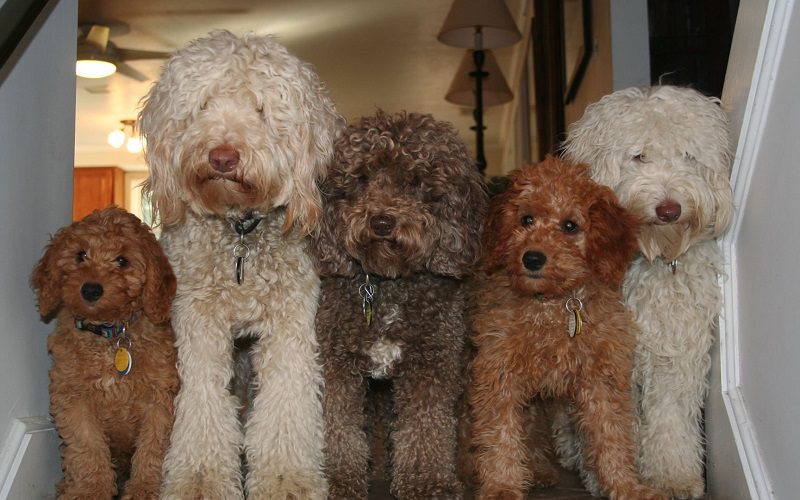
You’ve probably seen those F1, F2B, etc. weird classifications and wondered what they mean.
Well, F stands for Filial Hybrid and basically implies that your dog is not a purebred dog, but rather a hybrid. So that’s going to be standard.
Now F1 – is the first generation hybrid. F2 – second generation, F3 – third and so on. It’s like with immigration, your parents are first generation immigrants, you are the second generation and your kids are third… kinda like that.
Okay so what does that B stand for in F1B for example? It stands for a fancy word Backcross which essentially means inbreeding back to a purebred 100% Poodle usually for non-shedding purposes. So it’s a cross between a Labradoodle and a 100% Poodle. So we get:
- F1 Labradoodle: 50% Labrador Retriever and 50% Poodle
- F1B Labradoodle: 25% Labrador Retriever and 75% Poodle
- F1BB Labradoodle: 12.5% Labrador Retriever and 87.5% Poodle
- F2 Labradoodle: 50% Labrador Retriever and 50% Poodle (From Labradoodle parents)
- F2B Labradoodle: 37.5% Labrador Retriever and 62.5% Poodle
- F2BB Labradoodle: 18.75% Labrador Retriever and 81.25% Poodle
The main point here is that if you are looking for a non-shedding and hypoallergenic dog – go for the type that has MORE Poodle genetics in it. Simple enough right?
If you are picking a puppy – contact a specialized licensed breeder, preferably local (if you’re in Ontario like us, check out Lakewood Ranch Doodles) – they will tell you exactly the types of Labradoodles they breed and the types of coats they get.
How Often Do You Groom A Labradoodle?
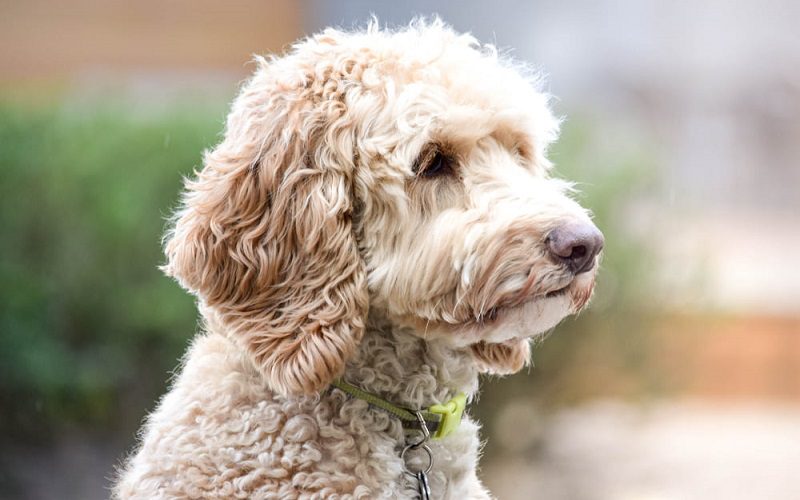
Okay now with the coats out of the way – let’s get to the grooming part. You might think that non-shedding Goldendoodles require less maintenance. In fact, it’s the opposite!
Since the hair isn’t falling out, it gets entangled in the thick curly coat that non-shedding Goldendoodles have – hence you need to groom them more often to prevent tangles. What does regular maintenance include?
Bathing, brushing, cutting hair and nail trimming!
Unless you have been rolling around in the dirt, a general brush twice a week should be enough. More detailed grooming might be required every few months, depending on your dog’s coat and how tangled everything gets.
During the shedding season, those Labradoodles that got more of the Labrador genes will need to be brushed daily.
Now if you just got a puppy – wait between 4 and 6 months before grooming, that’s the general recommendation. A puppy’s coat is less long and tangy than an adult dog’s, so it gives you extra time to get the vaccinations out of the way before seeing a groomer.
The catch is that we’re living through Covid times, so you might have to learn how to groom your dog yourself.
How Do I Groom A Labradoodle At Home?
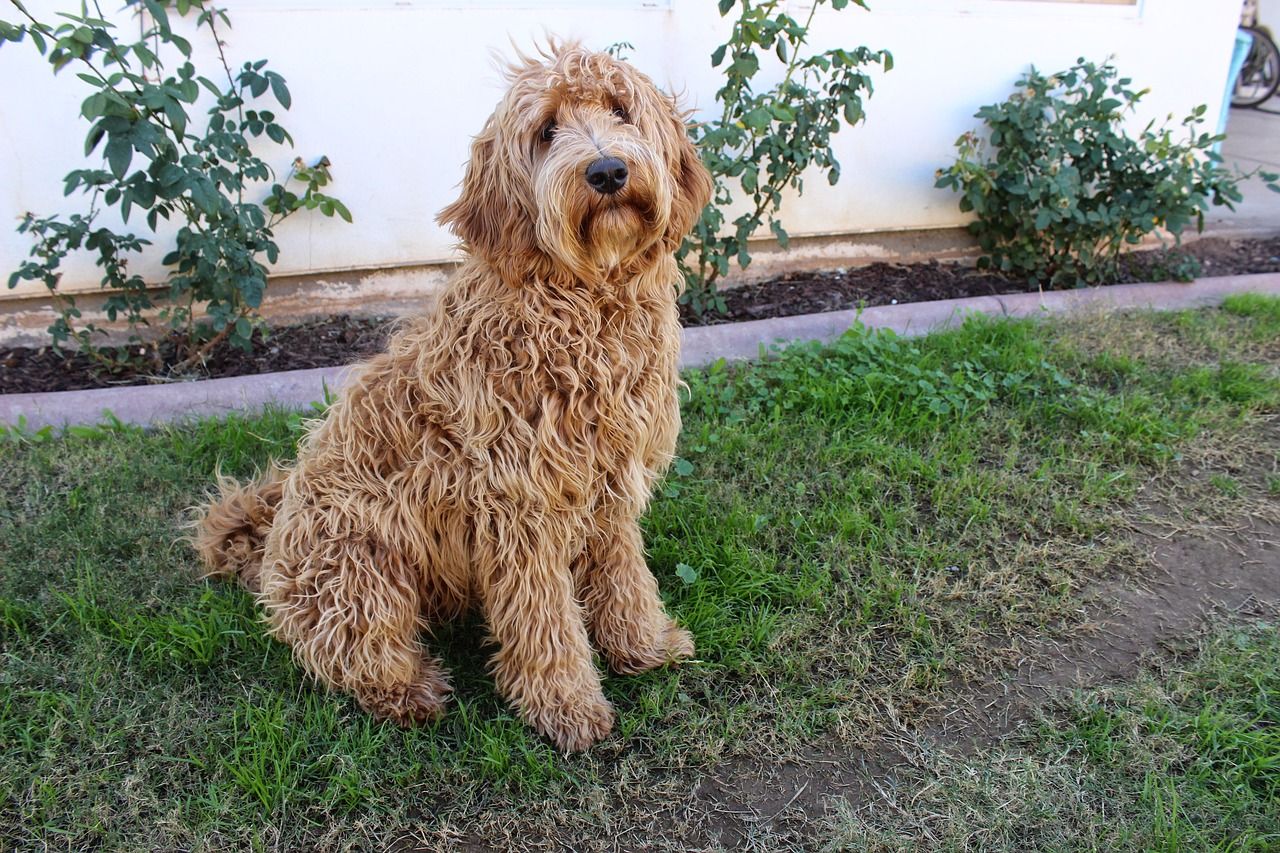
Make sure, before you groom your labradoddle to check your dog’s coat at least 2-3 times a week to make sure you catch mats before they get too bad. Pay extra attention to the areas behind the ears, chest, and underarmpits; they are most prone to tangling.
Make sure you brush from the base of the coat not just on the surface or you risk missing all the actions because mattings happens next to the skin.
Try to clean ears and clip nails weekly. For at-home grooming you will definitely require some tools, so here is a list to get you familiarized with what we’re using in the grooming steps below.
Must-Have Labradoodle Grooming Tools
Here are the tools for grooming a labradoodle you’ll need:
- Hair Clippers: Andis Proclip 2 are very popular ones that are often used by professional groomers. They make the job much easier!
- Comb: basic brushing tool available in any pet store, you probably already have one if you got a pet, and its a MUST if you don’t yet.
- Slicker Brush: a Labradoodle community staple – very convenient for brushing tangles.
- Scissors for Grooming – groomers recommend ballpoint scissors or non-sharp tipped scissors, and Moontay Dog Grooming Scissors is one of the popular choices.
- Cutting Shears: they help shape more sensitive or narrow zones that can be harder to access with a razor, including face, legs and armpits.
- Dog Shampoo and Conditioner: we try to stick to organic or natural options.
- Nail Clipper: we would recommend an electric one if you are not too confident and worry about clipping the nails too short.
- Pet Grooming Table or Pet Leash: to keep your pet from moving around too much these are indispensable tools.
Optional Labradoodle Grooming Tools
- Cutting Coolant and Lubricant: used for your hair clippers to keep the blades sharp longer.
- Detangler Spray: great for tangled zones, spray a little extra on the spots that need more work before dematting.
- Tasty treats: something that keeps your pooch occupied for a while, we like bully sticks since it takes time to chew them.
- Ear Cleaner and Ear Powder: to prevent moisture and infections.
- Styptic Powder: just in case you accidentally cut your pooch.
Tips Before Your Labradoodle Grooming
- Let your Labradoodle smell and get comfortable around the tools. The more used to the tools your Labradoodle is, the less anxious he will be during the grooming process.
- Prepare the treats! A bully stick can be a good one, since it can occupy your pet for good 30-40 minutes!
- Remember to always give positive reinforcement, treat, praise and repeat!
- Try to put your Labradoodle on an elevated surface, it’s easier for you to groom and also makes it less appealing for you pooch to hop off the table. You can also try using a grooming leash to make your job easier.
- Before grooming, make sure your tools are all on the table – makes your pooch more comfortable when he can see it, and easier for you to get them when you need them!
Step 1. Bath
If you have just come from a messy walk – give your Goldendoodle a bath with a good shampoo, as usual, stay away from the eyes and ears. Once you are dry and ready for trimming, proceed to the next step.
Step 2: Comb brush and dematter
Brush out the mattes with a comb, try to brush deep into the coat and not just on the surface. This will help pull out all that dead hair trapped in your dog’s coat.
A good dematter will help get the debris out without pulling out your dog’s hair, so it’s a useful thing to have.
Step 3: Detangling spray
As you do this, be careful to shield your dog’s eyes so you don’t cause any irritation.
Spritz the detangler lightly and evenly over your dog’s body. If you find tangles as you brush, you can stop and spritz on a bit more detangler to help work them out easily.
Step 4: Slicker brush
Here you can start where you feel comfortable. Most groomers tend to start with the feet and making their way up. If you have different sized slicker brushes, use the bigger ones on the body and the smaller ones on the head and legs.
Brush section by section, working through the tangles where you find them until the section is smooth.
Step 5: Comb the whole coat
After you’ve smoothed all the sections out, you can go ahead and comb the whole coat once again. Here you might find some tangles again.
You can go back to the slicker brush to deal with them as they come. Make sure all of the tangles are gone or next time around they will be even harder to untangle.
Step 6: Trim the coat
Now not everybody is confident trimming their dog’s coat, but if you are – here is a very useful tutorial to help you!
Hope this article helped answer some of your questions! Best of luck with the grooming! Find more tips from how to become a groomer or what to get for a new puppy in our blog!
Resources:


